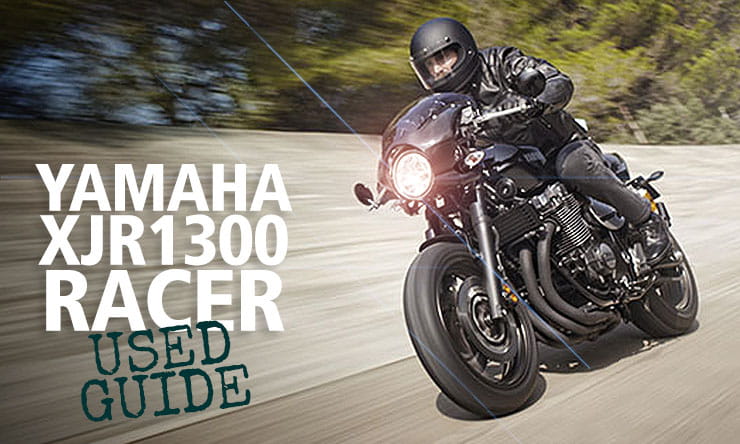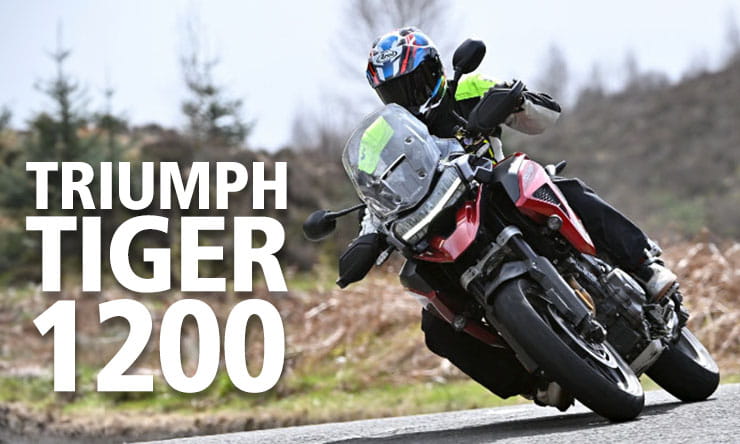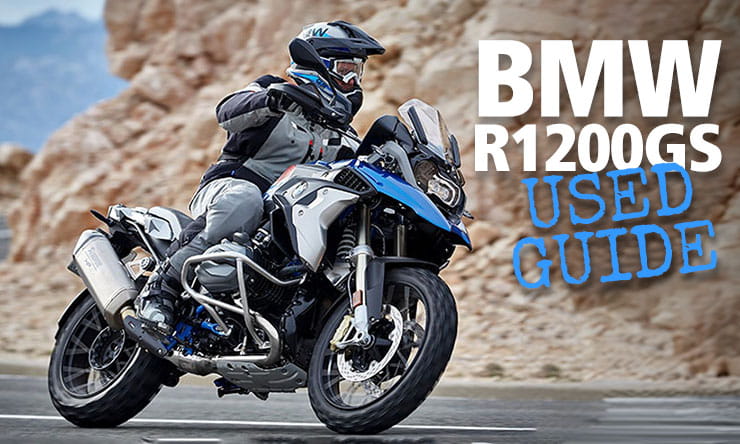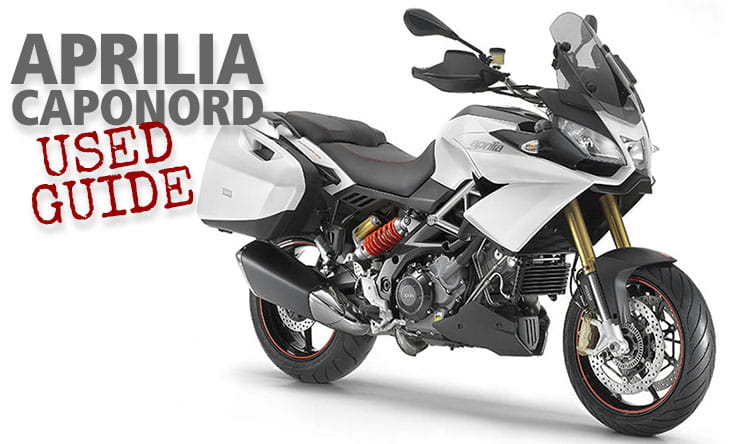Since its launch in 2013 (is it really that long ago? Time flies when you’re having this much fun...) the MT-09 has been a hugely important bike for Yamaha, lifting them out of a decade-long patch in the mainstream doldrums. As well as being a big seller in its own right, with around 9,000 of them hitting the roads every year, it’s also the backbone of the whole MT range, donating its basic running gear to the Tracer and XSR, and its DNA to every other MT model. Light, quick, fun, affordable – it’s been a winning formula which has seen the MT range rise to make up nearly half Yamaha’s European sales, with over a quarter of a million units sold in Europe alone. The original 2013 MT-09 set the template – fantastic, grunty, three-cylinder engine, minimalist bodywork and budget suspension only let down by snatchy engine management and slightly crude ride quality. 2017’s update brought a bit of much-needed refinement, but there was still room for improvement. For 2021 the need to conform to ever stricter emissions rules (we’re up to Euro 5 now) meant a complete revision was on the cards, and that’s why we’re here in not-so-sunny Marseille to have our first ride on the all-new 2021 model. Have Yamaha managed to hit Euro 5 standards without losing power and adding weight? More importantly, have they done it without stifling the MT’s trademark fun factor? We’re about to find out....
For and against
- Value for money
- Brilliant, torquey triple engine
- Unobtrusive rider aids
- Limited steering lock
- Rear shock is a bit of a cheapy
- Small tank, thin seat
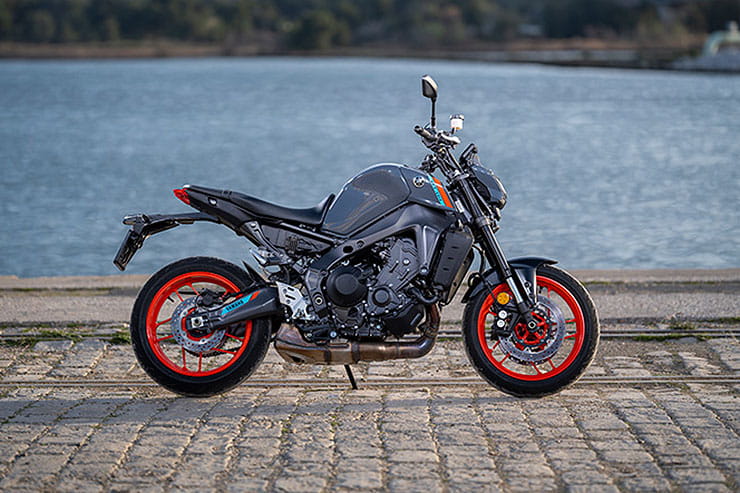
2021 Yamaha MT-09 PRICE - £8999
A nine grand price tag puts the new MT-09 right where it needs to be - significantly cheaper than most of the opposition (see ‘Rivals’ further on), and just squeezing under the hundred quid a month barrier for a typical finance deal. The Yamaha really packs in a lot more features than you’d expect at this price point, and a lot of it is new for this year, so let’s have a look....
Power and torque
Peak power is up 3% from the outgoing model, which is no big deal – it’s just nice too see it hasn’t lost any top end with Euro 5 status. More significant is an extra wallop of torque – 6% is claimed - which also comes in lower down, around 7000rpm, when the earlier engine peaked somewhere north of 8000rpm. There’s a decent spread of it too, with good, useable grunt available from a couple of thousand rpm (although for really rapid forward progress about 4000-5000rpm is a great launch pad).
On the road that translates as a willingness to fire out of bends with an urgency that never fails to bring a huge grin to your face. On the twisty roads out in the hills behind Marseille, where the new bike was launched, we were treated to mile after mile of 2nd and third gear bends, every one of them an excuse to wind the power on hard on the exit, feeling the rear tyre dig in and the front wave a temporary goodbye to the tarmac as the MT just drove relentlessly onwards. Mostly you can choose whether to drive from low, low down, or to ride the torque peak, or push on into the upper reaches of the rev counter – ride it like a scooter or ride it like a supersport, the MT seems to be equally happy. That triple engine has always been good, in a hooligan kind of way, but now it’s more refined, more useable – but still as much fun.
Engine, gearbox and exhaust
So where does this flexibility come from? At first glance the engine looks the same, but under the skin it’s heavily updated. The most obvious change is clear from a quick glance at the spec sheet - an extra 3mm on the stroke to take capacity up by 42cc to 889cc. More cubes is always a good strategy, especially when emissions rules are stifling your options to make more power by other means. That longer stroke gives a slightly less manic feel to the engine, as mentioned above, and it’s aided by a significantly heavier crankshaft, which gives more of a flywheel effect to the engine, making it a bit less snappy than before. It also probably helps with vibration and underlying noise. Revised camshafts also contribute to the change in torque peaks. There’s plenty more going on in the bowels of the motor though. New, lighter pistons are joined to that crankshaft by connecting rods that are each cast in one piece before being snapped to make a two-piece bearing to bolt round the crank (this allows a lighter casting, and fewer machining processes). The fuel injection system is heavily revised, with new injector banks squirting fuel more or less directly onto the tops of the intake valves, rather than further upstream in the inlet tracts. This is claimed to improve fuel atomisation and reduce the amount of fuel that resists combining with the incoming air and simply ‘sticks’ to the intake tract wall. The final link in the dynamic chain is a change in gear ratios for first and second, both of which become slightly taller, to damp out the previous model’s often criticized snappiness from low revs in low gears. Before I forget, the clutch is revised too, for a lighter lever feel and less of a clunk on downshifts.
Normally, the less said about standard exhaust systems the better. In these emissions-crazy days they’re usually big, heavy, ugly and fitted with the expectation that they’ll be ripped off by most owners and replaced with something lighter, prettier and fruitier before the bike’s hardly poked a wheel out of the showroom. But this one’s a bit different. No, it’s not pretty, but it has the decency to hide itself pretty well out of the way. It also bucks the trend for gaining lard and blaming noise and emissions rules, by being Euro 5 compliant while weighing in a useful 1.4Kg lighter than the outgoing model’s system. But the best bit is it sounds great – a nice, burbling low-down wooffle of the sort you usually don’t get with factory exhausts, without being too loud at the top end. In fact at higher revs and speeds, you hear at least as much from the airbox as you do from the exhaust. Yamaha reckon they’ve ‘tuned the intake and exhaust as you’d tune a musical instrument’ and the result is pretty pleasing to the ear.
2021 Yamaha MT-09 Economy
Yamaha claims the new MT is around 9% more fuel efficient than last year’s model, and capable of averaging around 55mpg. That doesn’t sound far-fetched – on our 150km loop, with a lot of heavy-handed throttle action and practically no pootling around, we were getting low 40s according to my hasty calculations. With a relatively small 14 litre fuel tank, that means you’ll be looking at filling up after around 110 miles, or running out after about 130 miles, stretching to 150 miles if you manage a genuine 50mpg.
Handling, suspension, chassis and weight
The MT-09 has always been well-balanced, great on smooth roads but hobbled by cheap, crude suspension when the going gets faster and bumpier. That’s changed, to a certain extent. The suspension’s still budget, especially at the rear, but it’s more controlled than I remember. The forks are new – shorter overall than before but with the same travel – and they’re fully adjustable for compression and rebound (one fork leg each) and preload. The rear shock’s adjustable for preload and rebound. They’re connected by an all-new frame made with a new die-casting process that allows daftly thin sections where it’s not structurally important, while still giving extra stiffness where it’s needed. The swing arm is new too, and so are the wheels, again using a new process which allows thin walls – the thinnest sections of the rims are just 2mm thick, where nearly twice that would be more normal. The result of all this, say Yamaha, is less mass (189Kg ready to roll is pretty good) and more emphasis on weighting the front tyre for better control. It certainly feels more planted than I remember from previous MT rides, with a smooth, rolling feel to the steering which is ideally suited to the twisty mountain roads we’ve been enjoying. On a track day, chasing perfect apexes, you might wish for faster turn-in, a bit more precision to exactly where you put your front wheel, but on the road, it works just fine. My only reservation is that extra front weighting gives it a bit of a ponderous feeling in town. There’s also a limited amount of steering lock, which can catch you out when threading through stationary traffic or turning round on small roads.
I said the suspension had improved, and I think it has – it’s still overwhelmed by large bumps taken at speed, and by sequences of small stutter bumps. The rear shock is definitely on the bouncy side too, especially as it heats up. The difference against the old model is that the rest of the time it rides better, and the suspension’s shortcomings don’t start to show themselves until you’re going faster than the older bike (and especially the original) wouuld have been happy with.
2021 Yamaha MT-09 Brakes
Strong enough to torture the front tyre and send your eyeballs out of their sockets, and with enough feel to be able to feather them all the way into turns. The front-weighted set-up helps with both of those, as do the high-ish, wide bars. The ABS is pleasingly subtle too – I provoked it deliberately a few times on dusty roads and it cut in smoothly and without fuss, and not too early. The same couldn’t be said for the rear, which seemed to be chattering and cutting in all the time in a straight line, although I didn’t have a problem with that when using the rear to tighten a line in a corner. And before you ask, no I wasn’t brave or cack-handed enough to make the cornering ABS work – these are not the kind of roads for that sort of silliness.
Comfort over distance and touring
This one will have to wait ‘til we get a test bike in the UK – 150km isn’t enough to make a judgement, especially as only the last 20-odd km were in any kind of steady state, on the autoroute back into Marseille. The rest were all manic direction changes and frantic acceleration and braking, so no test of long-term comfort. Even so, my backside wasn’t tremendously comfy at the end of the day – I think if I were buying an MT I’d be trying to persuade the dealer to throw in the optional Comfort seat (RRP £217) to sweeten the deal.
Above: Sport, Urban and Weekend Packs
Rider aids and extra equipment / accessories
Plenty to talk about here... Yamaha have gone big with the electronics package, as well as dishing up a well-stuffed optional accessory list. Rider aids first though. It’s got ABS – as everything has these days. But this is cornering ABS, which is impressive on a bike at this price point. It also has lean-sensitive traction control (TCS), but added to that it has slide control (SCS), which isn’t quite the same thing, and it also has an ‘Anti-Lift’ system to help keep the front wheel on the floor more of the time under hard acceleration. The thing that makes all that work is a 6-axis IMU, based on the one fitted to the R1. I won’t go into too much detail about that because the tech is beyond me, frankly, but basically it’s a very clever little black box which takes data from sensors measuring the bike’s movement from front to rear, left to right and up and down. Not just movement either, but the speed of that movement. It uses that data to tailor the ABS, traction, slide and lift controls to real-time conditions rather than the older style one size fits all algorithm. It does all that 125 times a second – told you it was clever.
If your eyes are glazing over at the thought of all this electronic intervention taking the fun out of the pure riding experience, don’t let it worry you for a second - it just doesn’t happen. In normal riding there’s just no sign that it’s all there working in the background. For example, I’d assumed the lift control was just a euphemism for Anti-Wheelie – and why on earth would anyone be anti-wheelie...? But it’s not – powering out of bends you simply wouldn’t know it was there. It allows plenty of leeway for catching a cheeky bit of air under the front wheel – so long as you’re driving hard forwards as well, it’s happy to let you take responsibility and have fun. And you can fool it with a big handful in first and hoist a big one should you wish. It’s all switchable anyway, via a scroll button on the right bar giving access to a sub-menu on the new TFT screen (which, by the way, is a bit small but otherwise well-designed and fully-featured) and by the button the left bar letting you switch between four principle riding modes plus a customisable Manual setting for the rider aids. Standard Mode 1 gives you minimum intervention on rider aids, and the snappiest throttle response, Mode 2 just knocks the snappiness off the power and adds an extra level of intervention, and so on until you get to Mode 4, which I tried for a couple of miles but which blunted the power so much it was no fun at all. I can’t see me ever wanting that, but then again if I had a mid-winter, diesel-strewn commute in the dark, I might well change my mind...
In the end, once I got a grown-up to show me how to access the manual mode settings (just a press and twiddle of the right-hand scroll button) I settled on leaving the TCS and Slide control on minimum setting, just in case of emergencies, and turning the Lift system off altogether, because hooligan... Despite that, I surprised myself by preferring that set-up in conjunction with the slightly softer Mode 2 engine setting, which was just more instinctive and controllable on the road than the snatchier Mode 1, and needed less precise throttle control. I’d save Mode 1 for track days.
On top of all this electrickery, there’s also an up/down quickshifter, which works very well so long as you’re cracking on, riding and changing crisply. It’s less good for pootling about, but you can obviously override it by just using the clutch as normal. Again, it’s easily switchable – a choice of on, off, up only or down only.
As for available accessories, there will be lots... Yamaha are already listing something like 55 separate lines for the MT, from crash protection to heated grips to luggage to a full Akrapovič exhaust system – tasty but then at around 1500 quid it should be... Too much to list here but have a look at the official Yamaha accessories site for more details.
There will be three ‘packs’ of accessories offered through dealers, offering a saving on full retail. The Weekend Pack (£692.90) has a front screen, more comfortable seat, soft panniers and a USB outlet. The Sport Pack (£571.40) has brake lever guards, a fly screen and grippy tank side pads. And the Urban Pack (£436.30)has a short screen, a rear carrier, a 39 litre top case, a USB outlet and a central tank pad.
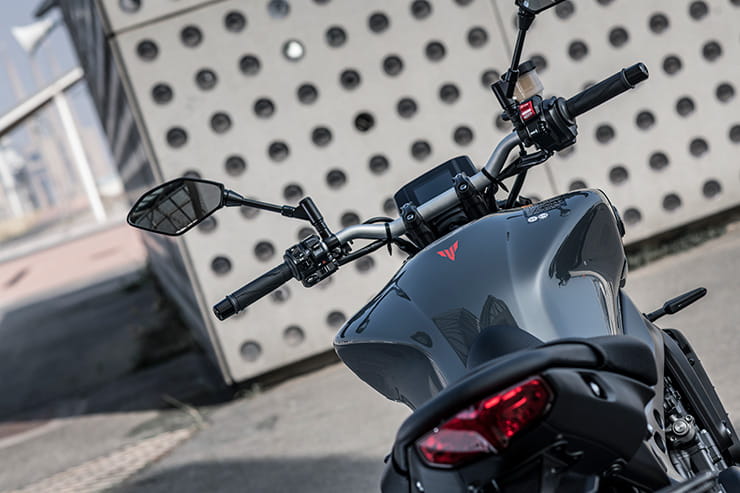
Rivals and competitors
It’s a bit hard to place the MT-09 in relation to its potential rivals. Dynamically, the closest you’ll get too the grunty triple engine and sheer joie de vivre of the MT is Triumph’s Speed Triple 1050, but that’s nearly a third again as expensive at £11,600 for the base model. Pretty much everything else that might be seen as a natural competitor is similarly more expensive – Suzuki’s Katana at £11,499 or GSX-S1000 at £10,699, and Honda’s CB1000R at £12,999 for the Black Edition version (prices for the 2021 base model weren’t available at time of writing). Closest in price are Kawasaki’s Z900 at £9297, and BMW’s F800R at £8660, but really, neither of them is in the MT’s league for exuberant performance and well-developed tech. Class of its own? Maybe.
2021 Yamaha MT-09 verdict
Bottom line: it’s an affordable bike which punches well above its weight in terms of tech spec and has a truly magnificent engine. Cleverly, it’s welcoming and intuitive enough to cosset newer riders, but sparky enough to satisfy the most committed hooligan or sportsbike rider. Neat trick if you can so it. So the suspension could be better? Fine, that’s easy to sort out a year or two down the road, with an upgraded rear shock and a revalve and new springs at the front. In the meantime, there’s little to find fault with at this price. I’d certainly be very happy to have one peeking out of the garage at me each morning.
Availability: Covid has delayed deliveries into the UK slightly, but at time of writing Yamaha were expecting the first bikes to land with dealers at the end of March, and as it’s such an important model, most dealers will be running demo bikes, with test rides available as soon as the lockdown situation allows – currently expected to be by 12th of April at the latest.
2021 Yamaha MT-09 second opinion
BikeSocial publisher Steve Rose has had a 2021 Yamaha MT-09 on long term test since April. Riding it on the same roads we all do, getting real-world fuel consumption figures and learning how to set up the electronics.
.ashx?h=493&w=740&la=en&hash=AB4A96CD80830C9BF581CBD557AC5B85CA9A6808)
This year’s colours and finish are superb
There are many, many things that make Yamaha’s 2021 MT-09 a better bike than its predecessor. Some of them are obvious, like the new chassis, which borrows many ideas from sports bike thinking and adds an extra confidence to how the bike gets into and out of corners. Others are the natural progression in things like fuelling and electronic control of ignition timing which make the throttle response on this bike just that little bit sharper, but also more consistent, giving a lovely, linear relationship between how fast you twist and how fast you go.
Then there’s the subtle stuff. The result of a hundred tiny tweaks and adjustments to either location of components, a setting here or there, change of tyres, refined braking systems that combine to add a little more confidence braking hard into a turn, setting your lean angle and getting on the power out of a turn.
Yamaha do this evolution thing really well. They can make some fairly substantial changes to a bike, but somehow keep the stuff that we liked about the old one, while tidying up the niggles. It’s a neat trick.
.ashx?h=493&w=740&la=en&hash=B51E498E41F4ABC62BF64D9A6700C24F0087B3D7)
Headlight divides opinion, but the whole thing looks much better in the flesh than any picture
That won’t stop a lot of people coming straight back with a comment about the new styling of course. That headlight design splits opinion right down the middle. All I can say is that in the flesh it looks a lot better than any photo I’ve seen of it, so if that’s the thing that’s stopping you, then get yourself to a dealer and make your mind up while standing in front of one.
I’ve had this MT-09 on extended loan for a couple of months now. And it’s done everything from nipping into town to nipping out for a cheeky lunch-hour thrash to nipping around the county for work.
That’s a lot of nipping and so far the one thing missing is a long trip. The most motorway miles we’ve managed are 114 in one hit. Hardly the long way round, but enough to remember that naked bikes are ok at motorway speeds for around 70 miles and tolerable for another 44.
.ashx?h=493&w=740&la=en&hash=019EF567CB1D939685BDC70F8AA5D91B5CB67E18)
Euro 5 exhaust is a little crude, the optional Akrapovic looks much neater but costs £1449
As a road tester the most noticeable changes to the previous MT-09 are the crispness of the fuelling and the extra confidence chucking it down a B-road when you’re already half an hour later home than you promised. Where the old bike could feel a little loose in the middle, soft at the front and harsh at the back, this one still has some excess movement in the suspension on standard settings, but much of it can be tweaked out (only had a quick play with the settings so far, but it now works well for me with a little more preload and rebound at the rear) and the new frame design, feels stiffer and more predictable.
Or that might be the electronics. One of many significant changes for this year is the addition to this relatively budget bike of a full collection of rider aids. Based on the six-axis IMU from the YZF-R1, which acts like a very high-tech gyroscope, in essence the MT has sensors that detect differences in wheel speed but also how much dive or lift happens at the front and back and how much movement there is from side-to-side. The IMU uses this data to adjust fuelling, braking and ignition timing to give the MT-09 rider a lot of additional assistance.
Not that you notice it because the systems are so smooth and subtle that it’s hard to know they are working.
.ashx?h=493&w=740&la=en&hash=DD9F80E4F454F7672CB0A720DD6DBAF55D7482E8)
Brakes are superb and you get cornering ABS for your £9002 too
In no particular order there is ABS in two forms; a simple system more suited to track use and a complex one that takes lean angles of the bike into account to vary the assistance required to keep you upright. Then there’s the traction control to help the bike maintain grip. Lift control is not the same as anti-wheelie. The bike will still wheelie, but lift-control limits theamount and prevents the bike flipping over. Finally, slide control, which is different to traction control in that it senses when the wheels are getting out of line and brings everything back under control.
All the above are programmable to suit your riding style if you know what that style demands. For the rest of us there are some standard settings that cover most bases and the option to set up our own profiles.
I spent a bit of time playing with the systems. Like suspension setting I take the drummer’s approach of trying full-on and then full-off and then moving the dials a little inbetween to fine tune. After an afternoon on a favourite road almost sliding, almost wheelying and almost locking a wheel braking heavily into corners I found that my favourite setting was actually one of the presets – Yamaha’s mode 1 which has a lively throttle setting and not to much electronic intervnetion.
If that sounds like a waste of an afternoon it wasn’t – I found it fascinating to learn how different the settings could be and also how subtle the systems are in controlling the ride. And I now know that if I find myself on a slippy autumn road I can add some more control to reduce the risk of slipping and sliding and know how it will behave.
The truth is that most of us will buy a bike like this, spend a day or so mucking about with it and then end up with a setting that we barely change. But that’s fine and isn’t it great that me, you or whoever has the chance to set up a bike for us.
Ten years ago you’d have had to spend almost twice the price of an MT-09 to get a cruder version of these systems on a focused uncomfortable £16k sports bike. Now it costs just £9002. Wow.
.ashx?h=493&w=740&la=en&hash=E80A5B01AB3B8992D5F43CC8D817C28EE07586A7)
Clocks are small, but easy to read and navigate.
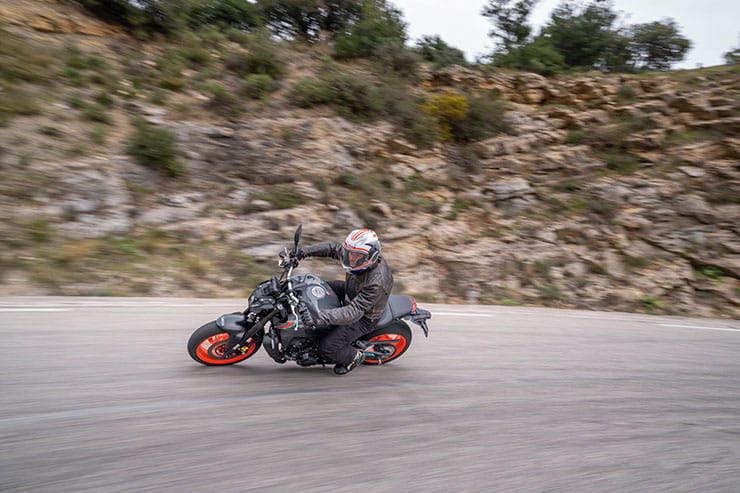
2021 Yamaha MT-09 spec
|
New price
|
£8999 otr
|
|
Capacity
|
889cc
|
|
Bore x Stroke
|
78x62.1mm
|
|
Engine layout
|
Triple
|
|
Engine details
|
Inline, DOHC, liquid cooled, 4v per cylinder
|
|
Power
|
117bhp (87.5kW) @ 10,000rpm
|
|
Torque
|
68.6 lb-ft (93Nm) @ 7000rpm
|
|
Top speed
|
Not tested yet, but estimate around 140mph
|
|
Transmission
|
6 speed, chain drive
|
|
Average fuel consumption
|
55mpg claimed
|
|
Tank size
|
14 litres
|
|
Max range to empty (theoretical)
|
170miles
|
|
Reserve capacity
|
no switchable reserve
|
|
Rider aids
|
Cornering ABS, Traction Control, Slide Control, Lift Control, up and down quick shifter, switchable riding modes.
|
|
Frame
|
Pressure die cast aluminium
|
|
Front suspension
|
41mm inverted fork
|
|
Front suspension adjustment
|
Preload, rebound and compression damping
|
|
Rear suspension
|
Rising rate monoshock
|
|
Rear suspension adjustment
|
Preload and rebound damping
|
|
Front brake
|
298mm discs, four-piston radial calipers
|
|
Rear brake
|
245mm disc, single piston caliper
|
|
Front tyre
|
120/70 ZR17 Bridgestone S22
|
|
Rear tyre
|
180/55 ZR17 Bridgestone S22
|
|
Rake/Trail
|
25°/108mm
|
|
Dimensions
|
2090mm x 790mm 1190mm (LxWxH)
|
|
Wheelbase
|
1430mm
|
|
Ground clearance
|
140mm
|
|
Seat height
|
825mm
|
|
Kerb weight
|
189kg
|
|
Warranty
|
2 yrs unlimited mileage parts and labour
|
|
MCIA Secured rating
|
2/5 stars
|
|
Website
|
www.yamaha-motor.eu/gb
|
Photography credit: Yamaha France
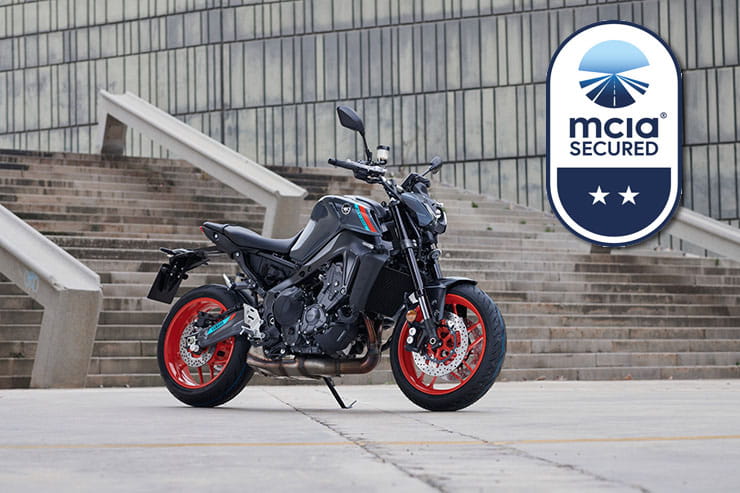
What is MCIA Secured?
MCIA Secured gives bike buyers the chance to see just how much work a manufacturer has put into making their new investment as resistant to theft as possible.
As we all know, the more security you use, the less chance there is of your bike being stolen. In fact, based on research by Bennetts, using a disc lock makes your machine three times less likely to be stolen, while heavy duty kit can make it less likely to be stolen than a car. For reviews of the best security products, click here.
MCIA Secured gives motorcycles a rating out of five stars, based on the following being fitted to a new bike as standard:
- A steering lock that meets the UNECE 62 standard
- An ignition immobiliser system
- A vehicle marking system
- An alarm system
- A vehicle tracking system with subscription
The higher the star rating, the better the security, so always ask your dealer what rating your bike has, and compare it to other machines on your shortlist.

Come direct to Bennetts and get more from motorcycling with all-year round exclusive rewards.
We'll find you our best price for the cover you need from our panel of insurers for our Defaqto 5-star rated cover.
- Discounted track days at some of the top UK circuits
- Exclusive competitions and prizes all-year round
- Trusted motorcycle advice and reviews from Bennetts BikeSocial
- Exclusive kit, clothing and accessory savings, discounts and competitions



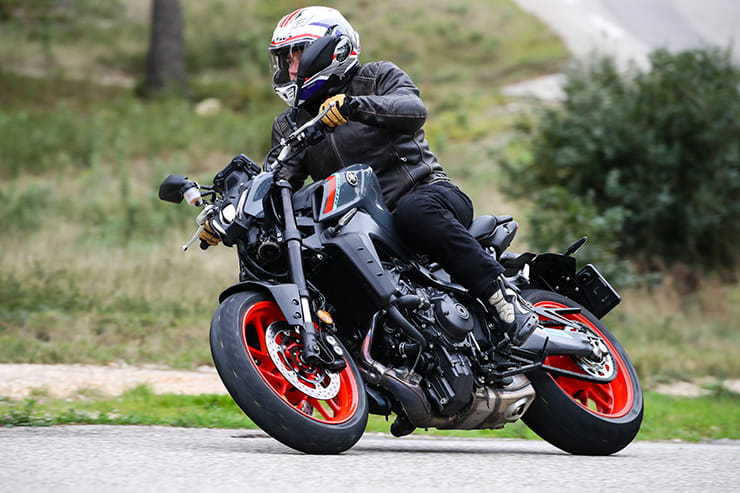
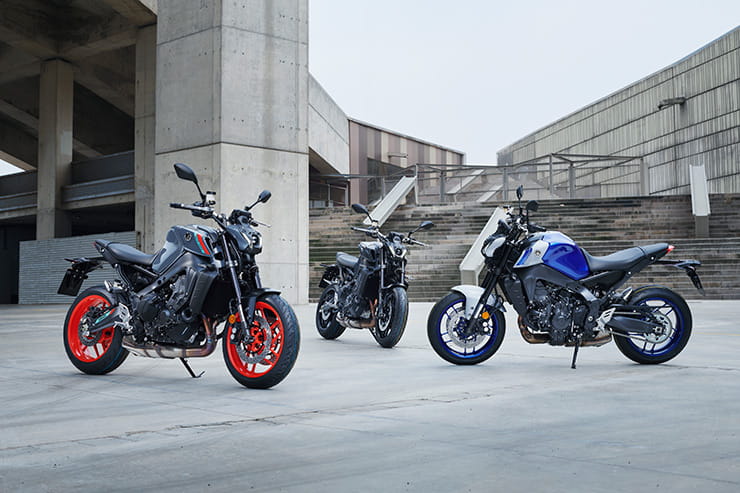
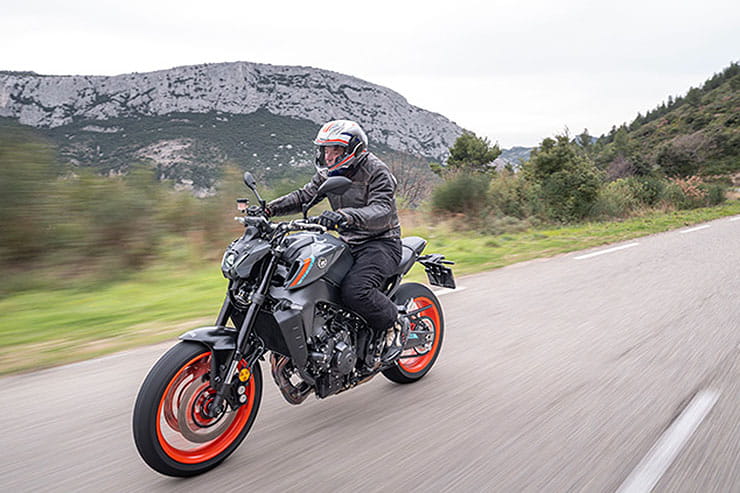

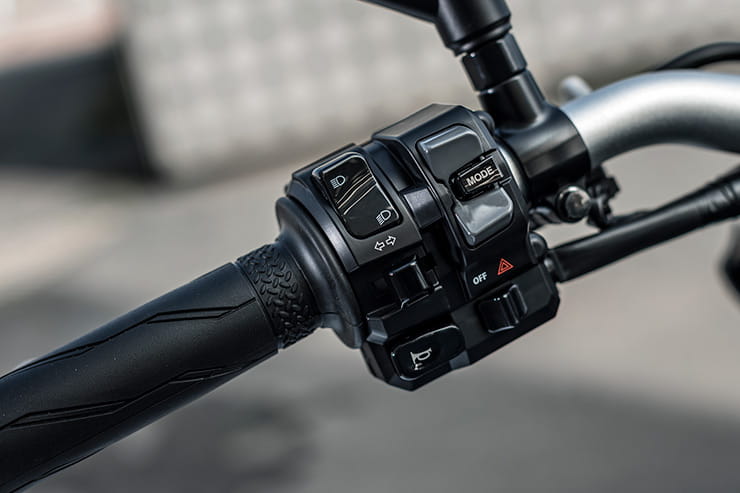
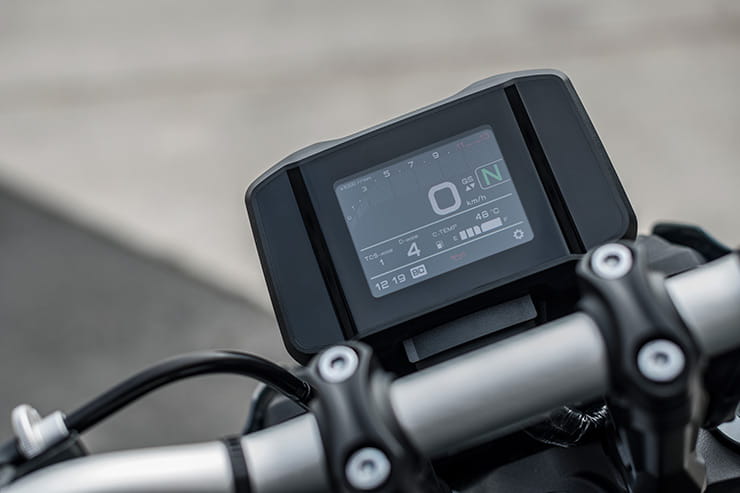
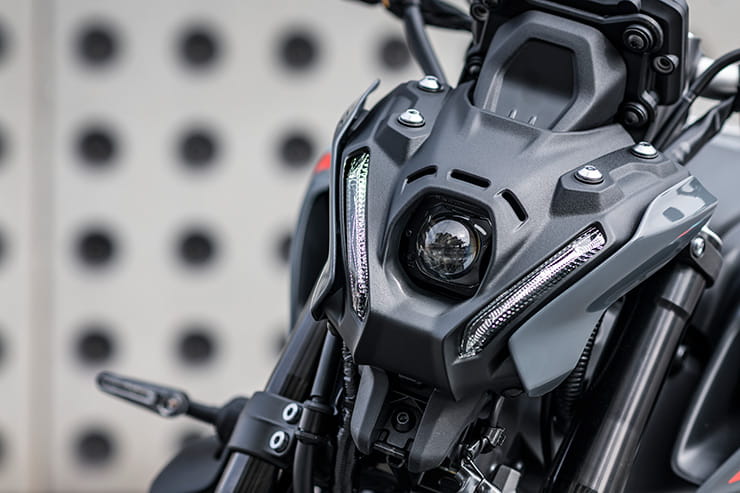
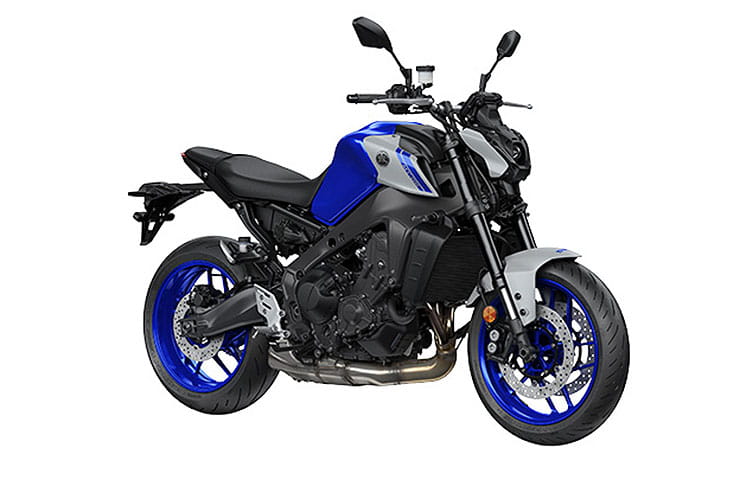
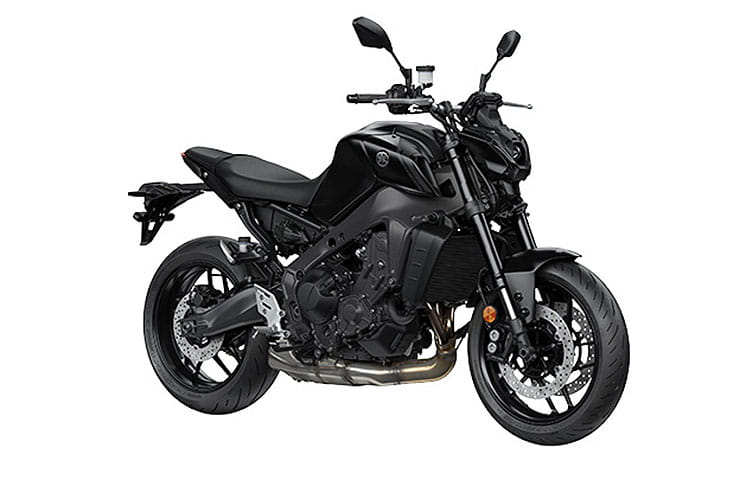
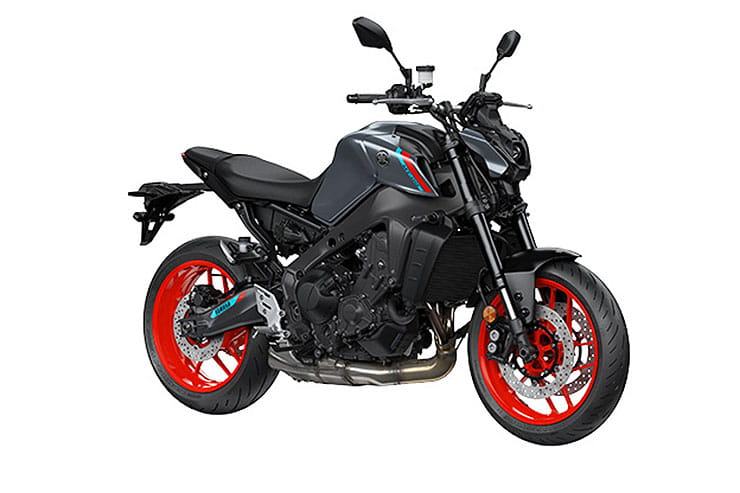
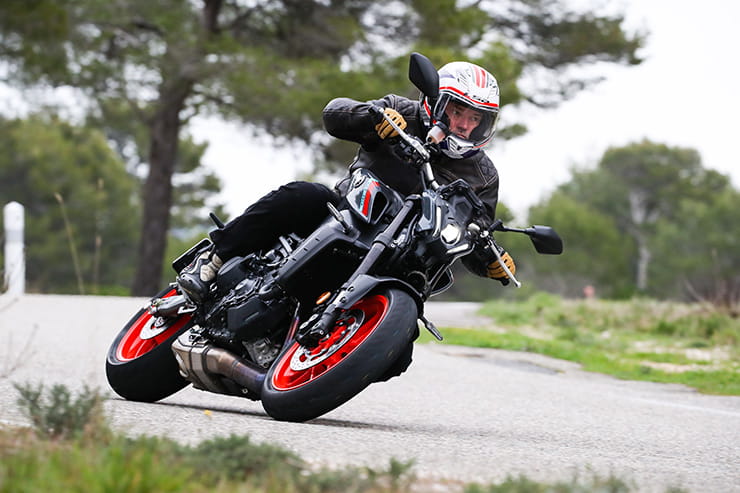
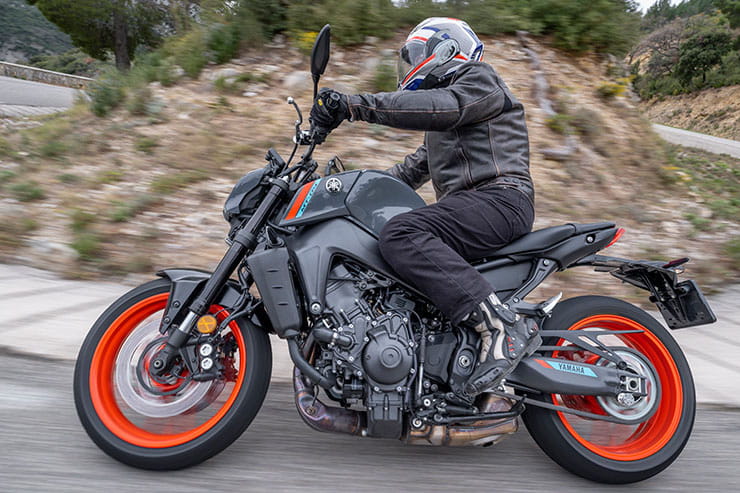
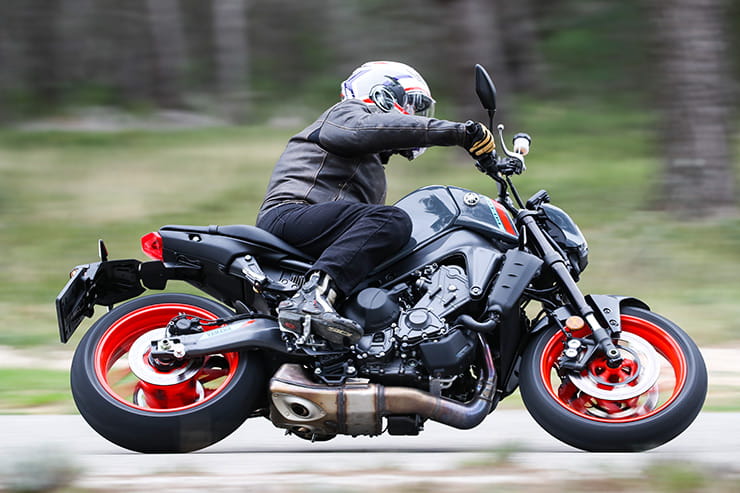
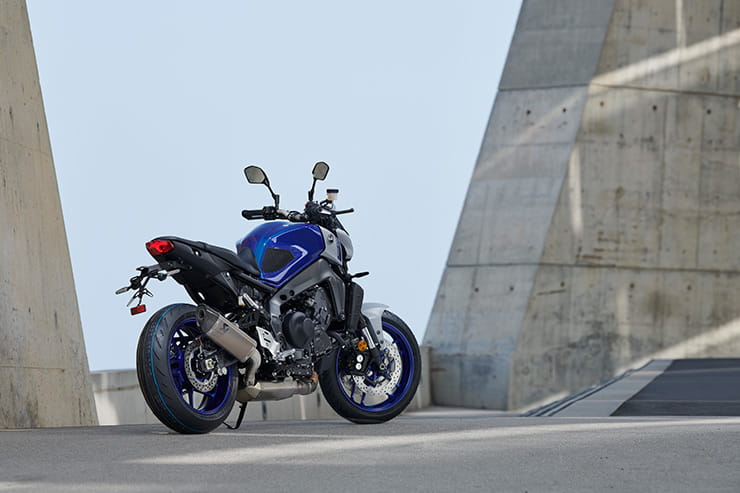
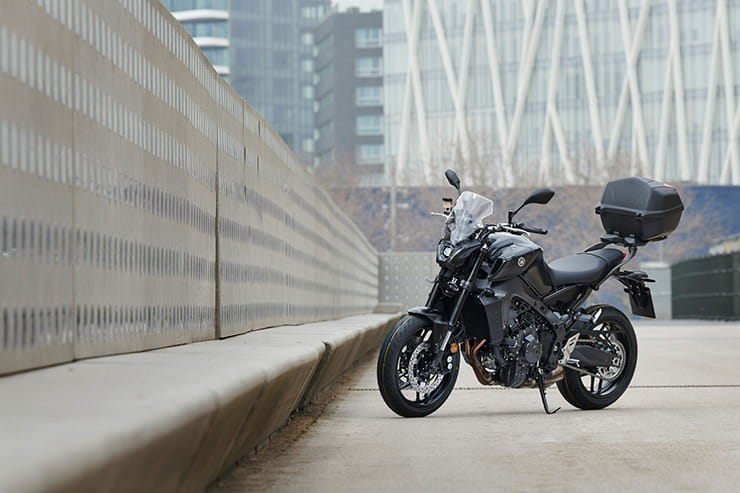
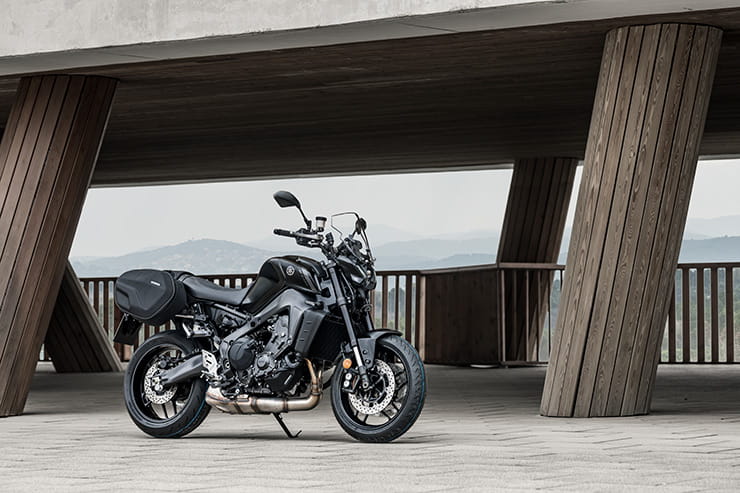

.ashx?h=493&w=740&la=en&hash=AB4A96CD80830C9BF581CBD557AC5B85CA9A6808)
.ashx?h=493&w=740&la=en&hash=B51E498E41F4ABC62BF64D9A6700C24F0087B3D7)
.ashx?h=493&w=740&la=en&hash=019EF567CB1D939685BDC70F8AA5D91B5CB67E18)
.ashx?h=493&w=740&la=en&hash=DD9F80E4F454F7672CB0A720DD6DBAF55D7482E8)
.ashx?h=493&w=740&la=en&hash=E80A5B01AB3B8992D5F43CC8D817C28EE07586A7)




